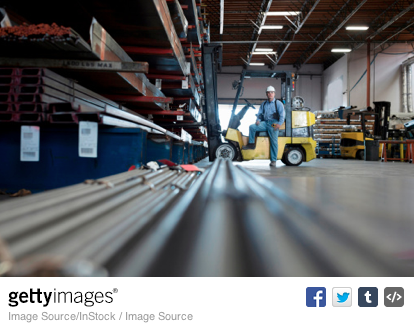
by Admin | Jun 3, 2014 | Plastics, Recent Posts |
Injection Molding: An Overview
Injection molding is the most common procedure used to produce plastic parts, and it forms an integral part of a vast array of different processes in most manufacturing sectors. It is commonly used to mass produce a specific part and ensure that all the objects are uniform, which is important for products that are modular and require high precision manufacturing. While many people look to new technologies such as 3D-printing as an innovation that will surpass injection molding as the go-to process to mass produce high volume objects, injection molding is continuously evolving, and there are new trends that will improve upon the process and ensure that the Injection Molding Industry remains in the forefront of manufacturing. (more…)
by Admin | Jun 2, 2014 | Plastics, Recent Posts |
Newlight Technologies has created a way to take greenhouse gases from our atmosphere and turn them into plastic pellets now being used to make mobile phone cases, explains this article from The Guardian. This opens up a whole new thinking for how plastics could effect the world. With the ability to harness carbon from greenhouse gas and use it as a constructive resource for materials we could start to create a greener world. Read more about whether this new method of modern day alchemy will take off or not…

by Admin | May 28, 2014 | Manufacturing, Recent Posts |
Any amount of rework or scrap in lean manufacturing points to an opening for improvement. The biggest challenge is realizing the source of the problem. Once the root cause is determined, lean manufacturers can achieve improved levels of scrap minimization. If proper minimizing is not carried out, manufacturers can get stuck in a never-ending loop of solving numerous symptoms caused by the issue without essentially coming to a resolution; one that can save them money and enhance their cash flow. (more…)

by Admin | May 22, 2014 | Manufacturing, Recent Posts, Safety |
Statistics are high for injuries and deaths in the work place. Manufacturers need to be more cautious than most, and so this article from Daily Safety Advisor is an important read. Outlining the biggest hazards to recognize, this post is a sample of the worst that can happen, but it’s an effective reminder. Don’t let the common sense of these tips trick you — when the work picks up, it’s easy to forget any or all of them in the rush.
Just consider: “In one recent year, more than 800 American workers fell to their deaths. On average, falls account for about 15 percent of all occupational fatalities, second only to motor vehicle accidents.”
Read the full article HERE.
by Admin | May 21, 2014 | Manufacturing, Recent Posts |
“Despite the economic crunch facing the nation’s domestic manufacturers, a number of operators have managed to survive and flourish in tough conditions.”
Here is a great article from Dynamic Business that outlines just how some manufacturing companies are keeping their heads above water despite hard times. Adaptability and resiliency are two qualities of note. But the real force behind some company’s success? …Specialization.
The key is to be the only one in your market who specializes in a certain aspect of manufacturing because there are always markets out there.



